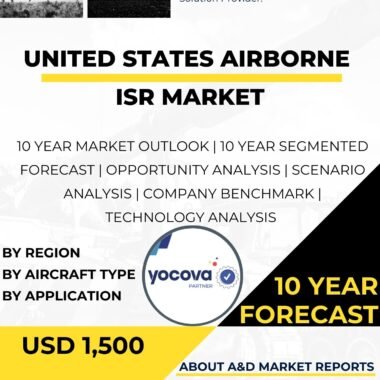Description
The United States Ship Simulator Market plays a crucial role in the maritime industry, supporting the training and proficiency of ship crews, enhancing safety at sea, and facilitating efficient and cost-effective ship operations. Ship simulators are advanced training tools that replicate real-world maritime scenarios, enabling maritime professionals to gain hands-on experience in various ship handling situations, navigational challenges, and emergency response procedures.
The U.S. Ship Simulator Market caters to a wide range of customers, including commercial shipping companies, maritime training institutions, naval forces, port authorities, and offshore industries. The demand for ship simulators has been growing steadily as the maritime sector recognizes the importance of investing in crew training and safety.
One of the primary drivers of the ship simulator market in the United States is the emphasis on maritime safety and accident prevention. The use of simulators allows ship crews to practice navigation techniques, collision avoidance, and maneuvering in different environmental conditions without exposing vessels to actual risks. This hands-on training enhances crew proficiency and decision-making skills, reducing the likelihood of accidents and improving overall safety at sea.
Moreover, ship simulators enable crews to experience challenging scenarios, such as adverse weather conditions, restricted waterways, and crowded ports, in a controlled and safe environment. Training in these realistic conditions prepares mariners to handle complex situations with confidence and competence, ensuring efficient and secure navigation.
In the commercial shipping industry, ship simulators are instrumental in meeting the training requirements set by international regulations, such as the Standards of Training, Certification, and Watchkeeping for Seafarers (STCW) convention. STCW mandates that seafarers undergo specific training and assessments to obtain and maintain their certifications. Ship simulators are essential tools for meeting these requirements and ensuring compliance with international standards.
Ship simulators are particularly valuable for training marine pilots, who are responsible for guiding large vessels through narrow and challenging waterways to enter and exit ports safely. Pilots train in simulators to familiarize themselves with specific port layouts, tides, and other environmental factors that could affect vessel maneuvering during pilotage operations.
In the United States Navy, ship simulators play a critical role in training naval personnel for various shipboard operations, including navigation, combat scenarios, and emergency procedures. Ship simulators are used to simulate diverse ship classes and mission profiles, allowing sailors to train on different types of vessels and prepare for a wide range of operational scenarios.
Ship simulators also offer cost savings for the maritime industry. Traditional training exercises involving live vessels can be expensive and may involve operational risks. With simulators, training can be conducted in a controlled and repeatable environment, reducing the need for actual ship usage and associated expenses. The ability to simulate various vessels and scenarios on a single simulator platform further contributes to cost efficiency.
Advancements in ship simulator technology have led to the development of high-fidelity simulators that offer realistic visuals, dynamic motion, and accurate vessel behavior modeling. These sophisticated systems provide trainees with an immersive experience, closely resembling real-life ship operations.
Additionally, ship simulators can be integrated with other maritime simulation systems, such as Vessel Traffic Management Systems (VTMS) and Engine Room Simulators, creating comprehensive training environments that replicate the entire shipboard ecosystem. These integrated simulations promote cross-disciplinary training and foster effective coordination among different shipboard departments.
The United States Ship Simulator Market is highly competitive, with several domestic and international companies offering a wide range of simulator solutions. Leading simulator providers, such as Kongsberg, VSTEP, Transas, and Rheinmetall, offer state-of-the-art simulator platforms tailored to meet specific training needs of the maritime industry.
Moreover, the United States Navy and Coast Guard have developed their own simulation facilities and training centers equipped with advanced simulators for naval and maritime security operations. These in-house facilities support the training and readiness of naval personnel and complement the capabilities provided by commercial simulator vendors.
As technology continues to advance, the ship simulator market is witnessing the integration of virtual reality (VR) and augmented reality (AR) technologies. These immersive technologies offer new training possibilities, allowing trainees to interact with simulated environments and equipment in more engaging and realistic ways.
Furthermore, the use of cloud-based simulators is gaining traction in the maritime industry. Cloud-based solutions enable remote access to simulation resources, making it more convenient for training institutions and maritime companies to access simulator capabilities without the need for extensive on-site infrastructure.
However, challenges persist in the ship simulator market, such as the high initial costs of acquiring and implementing advanced simulator systems. To address this, some simulator vendors offer flexible leasing and pay-as-you-go options, making simulator training more accessible to a broader range of maritime stakeholders.
The ship simulator market is also influenced by regulatory developments and evolving industry standards. The International Maritime Organization (IMO) periodically updates its guidelines on simulator training and assessment to reflect emerging trends and best practices. Compliance with these regulations requires simulator providers to continuously enhance their platforms and content to meet evolving training requirements.
In conclusion, the United States Ship Simulator Market is a critical enabler of safe and efficient maritime operations, providing comprehensive training solutions for maritime professionals across various sectors. Ship simulators play a vital role in enhancing maritime safety, improving crew proficiency, and meeting regulatory training requirements.
The market’s continued growth and innovation are fueled by the maritime industry’s recognition of the value of simulator-based training, advancements in simulator technology, and the increasing focus on maritime safety and security. As the maritime sector evolves, ship simulators will continue to be a cornerstone of training and readiness, ensuring that mariners and naval personnel are prepared to navigate and operate vessels effectively and safely in diverse and challenging environments.




